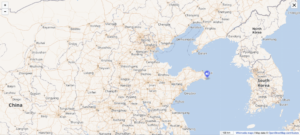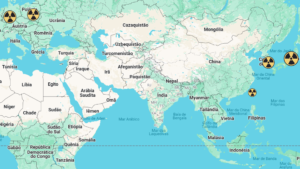The U.S. intelligence community downgraded its assessment of the Afghan government’s ability to maintain power after the withdrawal of U.S. troops, saying last week that the Kabul government could collapse quickly, within six months of withdrawal, the Wall Street Journal reported.
U.S. intelligence agencies revised their previously more optimistic estimates when the Taleban swept through northern Afghanistan last week, seizing dozens of neighboring districts and major cities. Afghan security forces often surrendered without a fight, leaving their American-supplied Humvees and other equipment to the insurgents.

The new assessment from the general US intelligence community, which was not previously reported, is now more in line with the analysis that has been generated by the US military.
The military has already withdrawn by the end of June 2021 more than half of its 3,500 troops and their equipment, with the remainder scheduled to be withdrawn by September 11, 2021.
On Wednesday, June 23, 2021, Taleban fighters were fighting government troops inside the northern city of Kunduz after occupying the main border crossing with Tajikistan the previous day and reaching the outskirts of Afghanistan’s main northern hub, Mazar-e-Sharif.
Tajikistan’s border service said 134 Afghan soldiers at the border crossing were given refuge, while about 100 others were killed or captured by the Taliban.
White House officials, according to the newspaper, are now encouraging the military to slow the pace of U.S. troop withdrawals amid reports of Taleban advances in the region.
Will Afghanistan be a Saigon 2.0? Why is the potential collapse of Afghanistan’s government important?
As they say, history does not repeat itself, but it does rhyme.
In historical terms, the “fall of Saigon” in 1975 is still a very recent event. Many analysts, researchers, and military personnel still alive remember this event, and see similarities with the possible “fall of Kabul.”
The fall of Saigon was when North Vietnamese troops took the capital of South Vietnam, just 2 years after the withdrawal of American troops, thus officially ending the Vietnam War.
When the US troops “pulled out” of Vietnam in 1973, they left the ARVN “Army of the Republic of Vietnam” to fight alone against the communist troops from the North. The ARVN was trained and equipped by the United States and by 1973, South Vietnam’s armed forces were the fourth largest in the world, with hundreds of thousands of soldiers.

However, that number was not enough to hold off the well-trained and motivated North Vietnamese troops along with the Viet Congs.
The fall of Saigon was a humiliation for the world’s most powerful country, which spent hundreds of billions of dollars on the Vietnam War, along with 58,000 dead American soldiers.
The rapid advance of the Taliban in recent days, accelerated by the withdrawal of American troops from Afghanistan, has brought back the ghost of Vietnam to Pentagon military and US intelligence analysts.
Trillions of dollars have been spent by the US, NATO countries, the United Nations, NGOs, and other international institutions on the pacification and development of Afghanistan. Not to mention the thousands of lives lost by the Western countries and the Afghans themselves.
It’s hard to say it wasn’t worth it. In 2001, when the international military intervention in Afghanistan began, the country was living almost in a state of anarchy, without a central government, without public institutions, and totally divided and disputed between “warlords,” and the Taliban/Al Qaeda.
Today, even if it is far from perfect, Afghanistan is in a considerably better situation, with a relatively stable government, developing public institutions, elections – not always clean – and even a little nascent tourism and international investments in natural resources.
But if Kabul falls, all these advances will be lost. And a destabilized country, at civil war, in the middle of Central Asia, will bring major geopolitical challenges to its neighbors. This is because extremism and violence could spread to bordering countries such as Pakistan, Tajikistan, Turkmenistan, Iran, and most importantly, China.
What about China’s role in stabilizing Afghanistan, with which it borders?
China has a lot to lose with the destabilization of Afghanistan. Even though China has invested more in other neighboring countries through the Belt and Road infrastructure program than in Afghanistan, it has invested in Kabul and has commercial and mineral interests there.
However, China has contributed very little to the stabilization of Afghanistan in the last 20 years, leaving the United States to foot most of the bill, but reaping much of the rewards.
Perhaps with the imminence of an Afghan destabilization, China will turn its energies and resources to supporting the central government in Kabul, or even make a deal with the Taliban to ensure that its interests in the country are not affected.
Regardless of the Chinese reaction, it is safe to say that the potential biggest losers from the collapse of Afghanistan would be the United States – which has lost a lot of blood and treasure in the country over the last 20 years – and above all, the Afghan people, who will once again not know what it is to live in peace for more than a few decades.








[…] Taliban group announced a new government in Kabul, 20 years after it was removed from power by the United States after the September 11, 2001 […]
[…] EU are great because it has a vision that the US and NATO should not be counted as loyal allies. The chaotic exit from Afghanistan and the lack of commitment from the formerPresident Trump with NATO showed that the EU should have […]